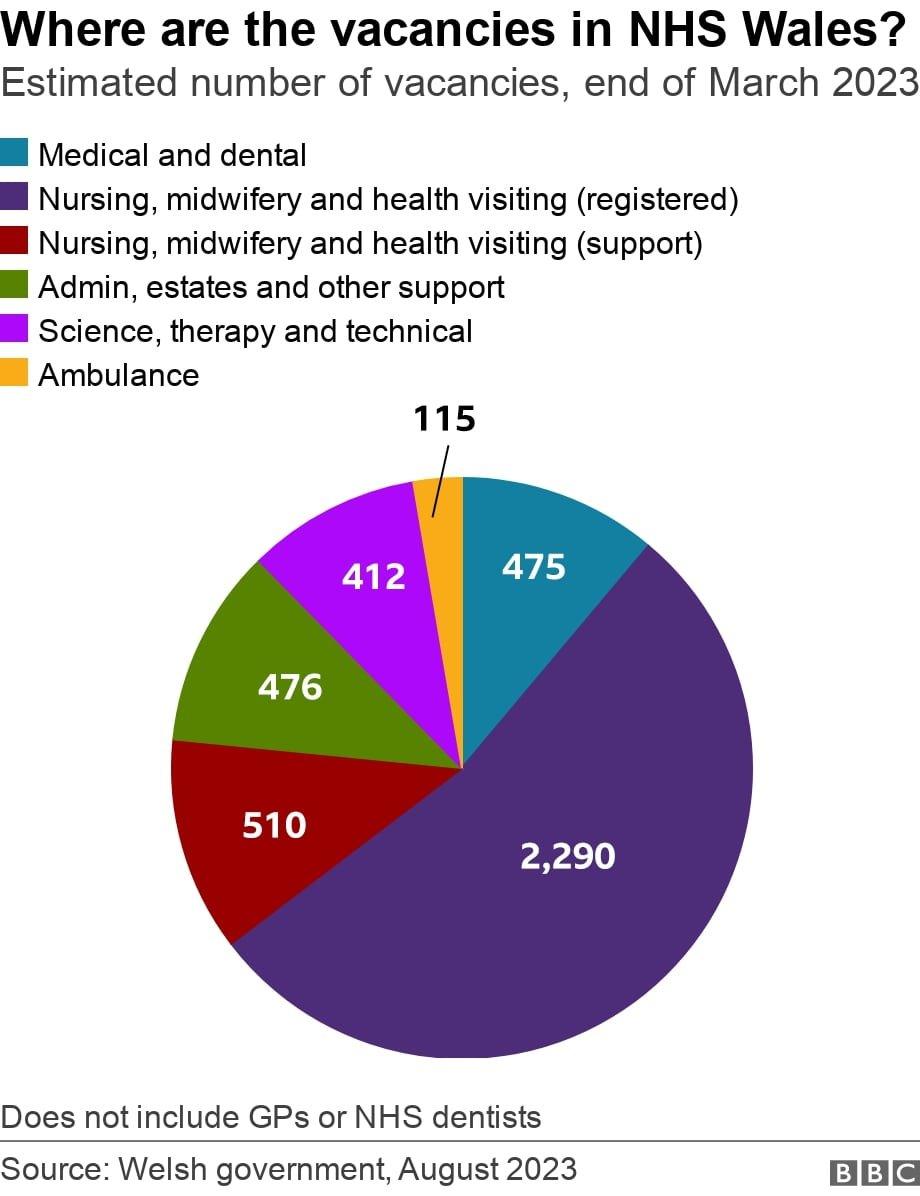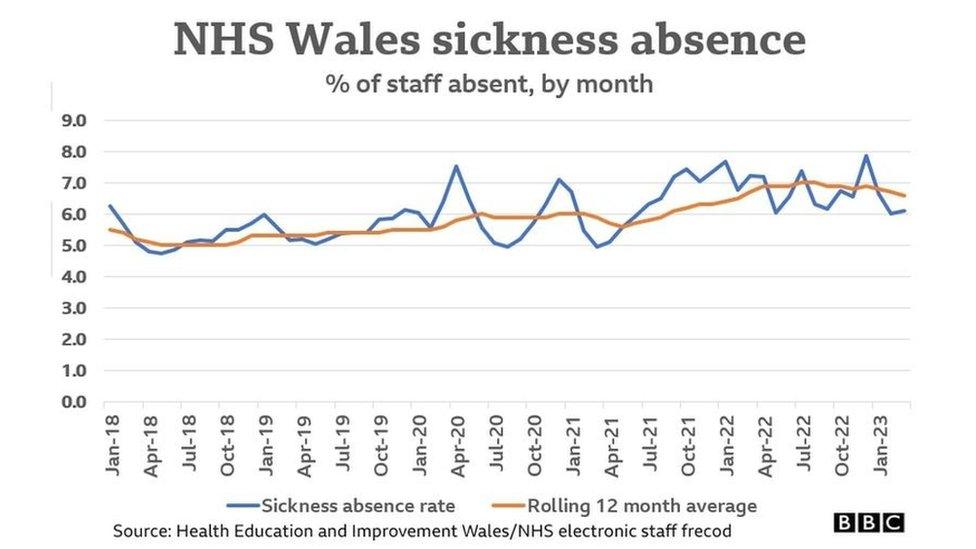NHS Wales: More than 4,000 staff vacancies, figures show
- Published

There are nearly 2,300 empty nurse, midwife and health visitor positions in the Welsh NHS
There are nearly 4,300 staff vacancies within the Welsh NHS, new figures show.
These include nearly 2,300 empty nursing, midwifery and health visiting posts - a vacancy rate of 8.4%.
A nurse from Swansea, who did not wish to be named, said the vacancy rate was causing existing staff to become "burnt out".
The Welsh government said its workforce strategy aimed to increase NHS staffing and reduce reliance on agency staff.
Official figures for NHS vacancies, based on the electronic staff record, are published by the Welsh government every three months.
The most recent data showed there were 510 nursing, midwifery and health worker support staff vacancies and 115 ambulance service vacancies.

Despite the shortfall, the number of NHS Wales staff has risen over the past year by 3.5%.
This includes a 4.3% rise in medical and dental staff - not including GPs and NHS dentists - and a 3.1% rise in the number of nurses, midwives and health visitors.
How do the figures compare with the rest of the UK?
The data is not directly comparable with other UK nations because of how it is collected, but recent figures showed NHS England had a nursing vacancy rate of 9.9%.
In Scotland it was 7.9%, while in Northern Ireland it was 8.6%.
The 26-year-old NHS nurse from Swansea said colleagues were leaving the health services to join agencies because the pay was better.
"Not giving staff fair pay results in less staff wanting to work for the NHS," she added.
"Less staff means more pressure on the ones who turn up. The ones who turn up then become burnt out.
"Being burnt out increases anyone's risk of making mistakes but in nursing that's even more dangerous."

A revised pay offer was accepted by 12 unions representing Welsh NHS staff earlier this year, but was rejected by doctors and the Royal College of Nursing.
The deal consisted of a 5% wage increase and a one-off payment for 2022-23 worth between £900 and £1,190.
On Wednesday, BMA Wales announced it would be entering a formal dispute, including seeking a ballot for strike action among secondary care doctors.
The Welsh government said is was "disappointing" that doctors had taken the decision, while it understood "the strength of feeling", it said the rejected offer was "at the limits of the finances available".
Nicky Hughes, from the Royal College of Nursing, said retaining nursing staff was a key issue.
"The amount of agency spend that is going into keeping patients safe is really worrying because we know that if someone doesn't work in an area as part of the team in a regular basis, then that can have detrimental effects on the outcomes for patients," she said.
NHS Wales spent more than £300m on agency staff last year, a rise of 28% on the year before.
Ms Hughes also said the routes into nursing should be "more flexible".
"There is a number of reasons why students decide that nursing isn't the career path for them and why, sadly, once people have actually gone through their training and become a registered nurse, many leave within the first six months to a year because of the stresses and responsibilities that they have."
Dr Hilary Williams from the Royal College of Physicians said more doctors would reduce waiting lists more quickly.
"Every single doctor has a story to tell about being asked to cover extra shifts or fill in for colleagues at short notice, simply because we do not have enough people working in the NHS," she said.
"Spreading the load across more staff means extra time to see more people in our outpatient clinics, teach junior doctors new skills, carry out medical research, and give patients the best possible care."
The Welsh government said its workforce strategy aimed "to meet future demand and deal with a worldwide shortage of medical workers, including reducing reliance on agency staff".
It also said nursing training places had increased by 54.3%, midwifery training places by 41.8%, and paramedic training places by 39.5%.

YR WYDDFA: Life on Britain's busiest mountain
WALESCAST: In-depth analysis of Welsh politics

- Published13 August 2023

- Published4 August 2023

- Published10 May 2023
